In 2006 Bill/Lou, James and Jan began conspiring to create a gift for Jude. She actually inspired the idea herself when she queried Bill/Lou if he used any architectural software that could map a two-dimensional image onto a three-dimensional surface. Further investigation revealed that Jude was attempting to make a globe of the planet Anarres, her favorite fictional locale from the stories of Ursula LeGuin. We knew it would take our combined talents to pull this one off. |
||||||
Jim began by turning the globe itself out of basswood, carefully documenting the process with photos... |
||||||
|
 |
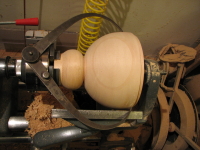 |
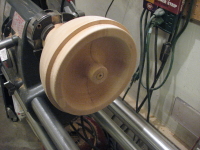 |
|||
Gluing up the basswood blocks |
Beginning turning on lathe |
Hemisphere emerging |
Hollowing one hemisphere |
|||
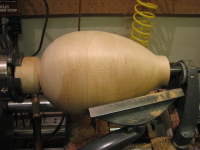 |
 |
 |
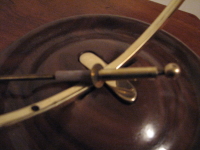 |
|||
Glued-up hemishperes |
Turning the final sphere |
Turning the walnut base |
Fabricating the brass hoop |
|||
Then Bill/Lou took over, taking LeGuin's flat drawings and mapping the continents and oceans onto the surface of the globe... |
||||||
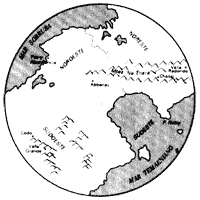 |
 |
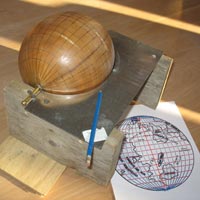 |
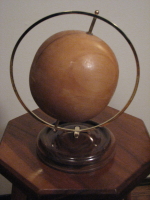 |
|||
Scan of original sketch... |
...with longitude & latitude... |
...mapped using a custom jig |
Globe, base & hoop assembled | |||
Finally we delivered the assembled and layed-out globe to Jan for her artistry. |
||||||
|
||||||
Here's Jude's email reaction: |
||||||
Dear esteemed planetary creator persons of great talentedness, |
||||||
Jude's Further Comments:Everyone has their favorite books. The Dispossessed by American author Ursula K. Le Guin is one of mine. I read it for the first time the year after it was published (1974). Since then I have read it at least once a year. How I read it varies considerably. Sometimes I read it straight through from start to finish. Other times I read only the chapters set on the planet Anarres. Often I just open the book randomly and read a few pages. Several aspects of the book appeal to me. The complexity of the world building by Le Guin is profoundly attractive. This includes the physical worlds, their cities, their climates, and their flora and fauna. It's not a matter of how well she visualizes things for her reader. It goes deeper than that. Although Le Guin's world building is framed by the socio-political context of the 1960s and 70s, she manages to create a place with a solid and unique sense of its own reality. The cultures of the two worlds (Anarres and Urras) are deliberately set in conflict with each other, but each culture stands on its own in terms of its psychology, sociology, customs, and ways of being. As a one-time theatre major and long time imagineer I am always captivated by how culture(s) manifest and make of themselves. Much of my time reading the book involves my imagination crawling around Anarres mostly, but also Urras, trying to see how the buildings are built, the clothing designed and made, the food recipes preferred, and the people interacting. The quality of psychological differentiation possessed by several key characters from Anarres is something I find very satisfying. I like, too, that the major characters (Shevek, Takver, and Bedap) are comfortably intellectual while also plainly social and creative. It is unusual, however. In a 1990 short story The Shobies' Story, Le Guin created a decidedly less savory character who is identified as being from Anarres. Finally, I am intrigued by the utopian discourse that underlies the story and its characters. This book always strikes me as an imagination in motion - even though the story is long since published, the events set, and the politics gnawed to death by reviewer after reviewer. Le Guin wrote The Dispossessed as a deliberate "thought exercise." I find myself continuously drawn to and curious about how writers create. And Le Guin is a master writer. |
||||||
Links of Note (with Jude's annotations):
A review of The Dispossesed by Victoria Strauss (2000). BOOK: The New Utopian Politics of Ursula K. Le Guins's The Dispossessed. Edited by Laurence Davis and Peter G. Stillman. Lexington Books, 2005. ISBN: 978-0739110867 This is a thoughtful set of essays ending with a short piece by Ms. Le Guin herself. She liked this book, saying: "This is criticism as I first knew it, serious, responsive, and jargon-free." The book is erudite and scholarly. An interesting read but one that also demonstrates how scholars can sometimes kill the underlying joy of a story by focusing at length on its meaning. |
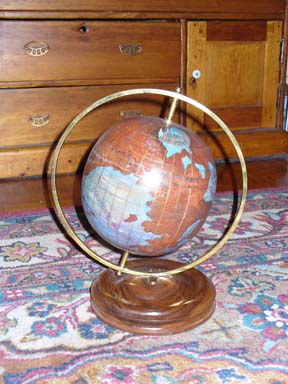 |
|||||
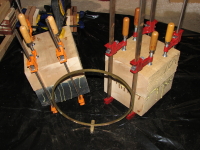
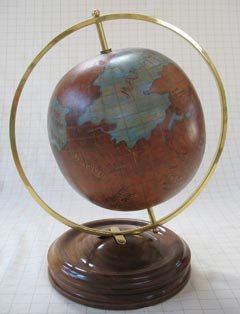


 Comments? lou@designcoalition.org
Comments? lou@designcoalition.org